What's New
Displaying results 71 - 80 of 4052
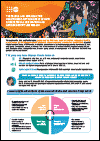
Resource | Fact Sheets,
Throughout the Asia and Pacific region, young people with diverse sexual orientation and gender identity or expression (SOGI/E) experience a high burden of poor sexual and reproductive health (SRH), including a disproportionate burden of HIV, intimate partner violence and psychological distress. This group also often experiences considerable barriers to accessing quality health services and are largely neglected by existing adolescent health, SRH, and HIV policies and strategies in the region. A multicomponent, multisectoral approach that fully engages young people with diverse SOGI/E in design, implementation and evaluation is required to address the complex determinants and multiple vulnerabilities that contribute to their poor health outcomes.

Resource | Fact Sheets,
Digital media are increasingly influencing the lives of young people. Around the world, adolescents and young people are using digital media as a platform to learn, experience, and communicate. Across Asia, and increasingly in the Pacific, young people use smartphones, tablets and computers to engage in diverse online activities, such as social networking, instant messaging/texting, and browsing websites/search engines. This connectivity creates both positive opportunities to access sexual and reproductive health information but also challenges on many fronts.
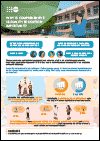
Resource | Fact Sheets,
‘My boyfriend is pressuring me to have sex, how do i say no?’
‘What is love?’
‘What does it mean if I am a girl and I find other girls attractive?’
‘What is HIV and how can I protect myself?’
These are common questions that young people are either too afraid to ask or lack the comprehensive knowledge, supportive attitudes and life skills they need to make these decisions about their lives and bodies safely and responsibly. Sexuality is a fundamental part of human life. Every young person will have to make decisions that impacts their sexual and reproductive health, and wellbeing. That is why comprehensive sexuality education is so important.
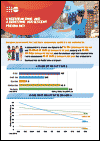
Resource | Fact Sheets,
Every year, there are over 3.7 million births to adolescent girls aged 15-19 in Asia and the Pacific. Adolescent fertility rates are now highest in the Pacific (51 births per 1,000 girls) and Southeast Asia (43 births per 1,000 girls), compared with South Asia (26 births per 1,000 girls), where there has been a significant reduction in the last two decades, and East Asia (7 births per 1,000 girls). Adolescent pregnancy has profound implications for the health and wellbeing of young people, and that of future generations. Addressing adolescent pregnancy requires a comprehensive, youth-centred, multisectoral approach to respond to the interrelated drivers of early pregnancy, and reduce associated adverse outcomes for girls and their infants. Key is the meaningful engagement of young people to understand the factors contributing to pregnancy and identify effective approaches that respond to their needs and take into account their agency.
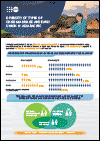
Resource | Fact Sheets,
In the Asia and Pacific region, 23 million adolescents aged 15-19 years are currently married or in union. Child marriage and early union (formal or informal, before the age of 18 years) is common throughout much of the region, with the highest prevalence in South Asia and some Pacific countries. The legal age of marriage should be 18, and all countries should enact legislation to prohibit forced marriage and remove exemptions that allow nonconsensual child marriage. However, treating all unions under the age of 18 years as forced and invalid can have harmful consequences. Enforcement of laws can cause harm to the girls we are intending to protect. Understanding the different forms of early marriage and union in the context of adolescent development and agency is critical to ensuring the implementation of child marriage legislation does not cause harm.
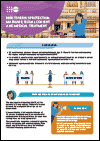
Resource | Fact Sheets,
We need to ensure a balance between protecting adolescents (age 10-19 years) from harm and respecting their agency and right to sexual and reproductive health (SRH).
This factsheet addresses the issue of ‘rights versus protection’ through (1) Laws related to age of marriage; (2) age of consent to sex; and (3) age of consent to services.These laws which are intended to protect young people also need to incorporate adolescents’ agency and context of their lives. Adolescents’ agency needs to be at the centre of efforts to develop and implement legislation that impacts their lives.
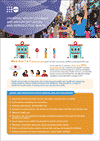
Resource | Fact Sheets,
Health services play an important role in reducing preventable poor health and supporting young people to make a healthy transition into adulthood. While many countries in Asia and the Pacific have made considerable progress towards effective coverage, and to some extent equitable coverage, of sexual and reproductive health (SRH) services, progress has not been realised for adolescents (age 10-19 years). Many national universal health coverage programmes exclude SRH services that are of particular priority and importance for adolescents. As a result, young people (age 15-24 years) continue to have a high unmet need for essential SRH services and coverage is particularly low among rural, less educated, poorer, and marginalised young people. This factsheet summarizes key recommendations to improve the inclusion of adolescents and young people in universal health coverage.
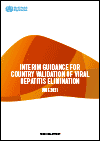
Resource | Publications,
WHO has developed this interim guidance for countries and other stakeholders seeking validation of elimination of viral hepatitis as a public health problem, with a specific focus on hepatitis B virus (HBV) and hepatitis C virus (HCV). It provides a global framework for the processes and standards for validation of elimination, and overall proposes the use of absolute impact targets to validate elimination at the national level (instead of, although equivalent to, the relative reduction targets originally defined in the 2016 GHSS) in combination with a set of programmatic targets.

Resource | Publications,
Since its launch, GLASS has expanded in scope and coverage and as of May 2021, 109 countries and territories worldwide have enrolled in GLASS. A key new component in GLASS is the inclusion of antimicrobial consumption (AMC) surveillance at the national level highlighted in this fourth GLASS report.
The fourth GLASS report summarizes the 2019 data reported to WHO in 2020. It includes data on AMC surveillance from 15 countries and AMR data on 3 106 602 laboratory-confirmed infections reported by 24 803 surveillance sites in 70 countries, compared to the 507 923 infections and 729 surveillance sites reporting to the first data call in 2017.
The report also describes developments over the past years of GLASS and other AMR surveillance programmes led by WHO, including resistance to anti-human immunodeficiency virus and anti-tuberculosis medicines, antimalarial drug efficacy.

Resource | Fact Sheets,
In May 2021, there were 645 confirmed HIV-positive individuals reported to the HIV/AIDS & ART Registry of the Philippines (HARP) and were accounted to the total (86,617) reported cases since January 1984. Moreover, 16% (104) had clinical manifestations of advanced HIV infection at the time of testing. Ninety-four percent (607) of the reported cases were male. Of the total male cases, 2% (12) reported their gender-identity as female (transgender women) at the time of testing. Further, half of the cases (50% or 324) were 25-34 years.





